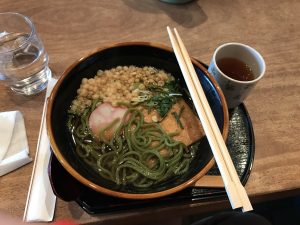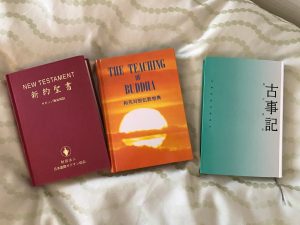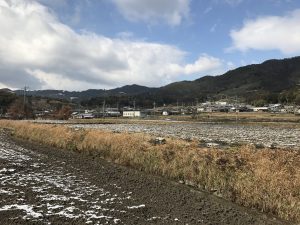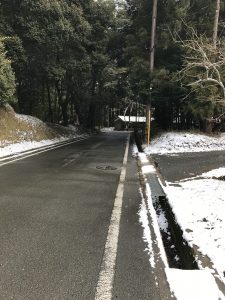Shrines and temples are everywhere here, from the huge buddha at Todaiji in Nara, to the tiny jizo shrines along country roads.

Roku-jizo. We often take large tours here for sight-seeing.
In Buddhism, Jizo is a boddhisatva (Kshitigarbha in Sanskrit) that has vowed to care for the beings in the present, after Buddha entered nirvana, and before Miroku, the buddha of the future comes. Jizo’s name can be translated as “Earth Womb,” and he is the patron diety of children. In Japan, jizo statues are associated with guiding the lost, including the spirits of miscarried or aborted infants.
When Jizo statues are arranged in sets of six, like in the picture above (in front of a Wazuka tea field), they represent guides for each of the six realms of Buddhist cosmology. Those are: the heavenly realm, the realm of titans, the realm of hungry ghosts, the hell realm, the animal realm, and the human realm.
Jubu-zan, the tallest peak in Wazuka, has been a religious location since the Nara period, when monks would come from Nara’s old capital to climb around the peak on pilgrimage. Along the road into town, you can see an 800 year old cliff carving of the boddhisatva Miroku, which was a waypoint along the pilgrimage. Miroku is the boddhisatva of the future, who will come to help everyone to enlightenment when the world ends.
In Japan, Buddhism and Shintoism exist side-by-side. Generally speaking, Shintoism deals with the current world, and Buddhism deals with life beyond the mortal lifespan. (Of course this is a gross oversimplification with many exceptions.)
The featured image at the top of this article is a picture of Tenmangu, the shrine next door to the Obubu house. The main deity (there are several others enshrined inside as well) is the spirit of Sugawara no Michizane, who lived from about 845 to 903 CE, in the Heian period. He was an intellectual, a famous poet and politically influential. However, he died in exile, and soon after, a variety of inauspicious events occurred, including plague, drought, and the death of the Emperor’s sons.
To appease Sugawara’s spirit, the first Tenmangu shrine was erected in Kyoto, and they posthumously reinstated his title. Within a century, Sugawara became Tenjin-sama, the deity of scholarly learning, and his shrines are numerous across Japan. Apparently there used to be a school next to the temple grounds of this one.
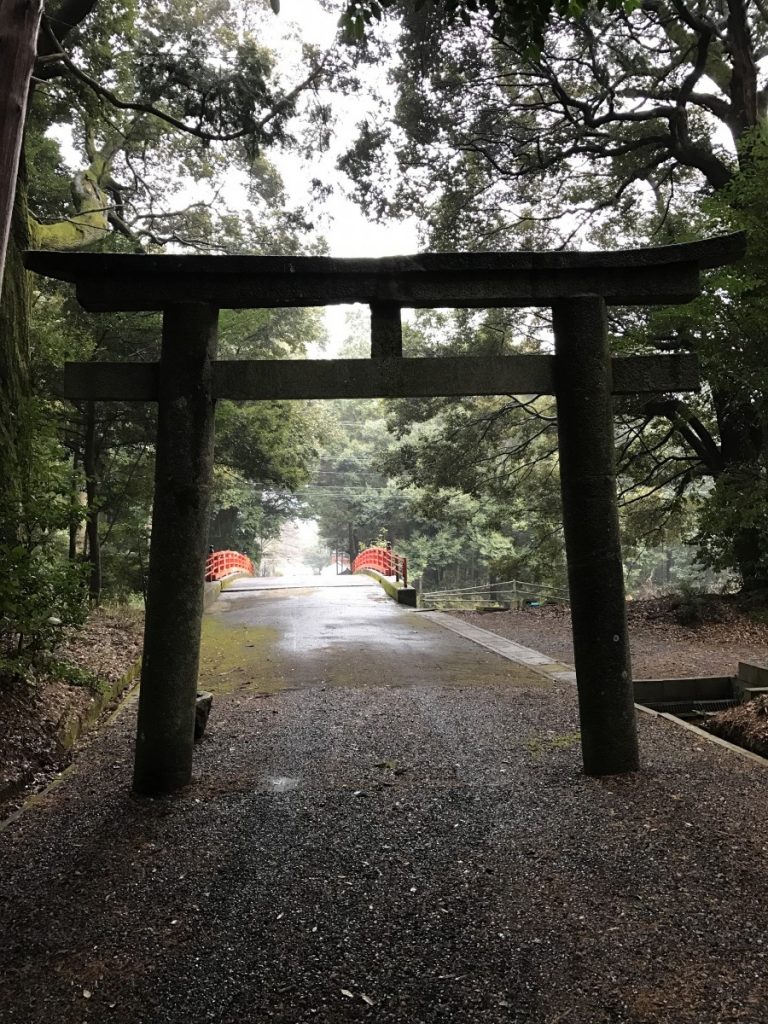
Torii gate, part of Tenmangu shrine
When entering a Shinto shrine, first you pass through a torii gate, which marks the transition to sacred space. Before stepping through, it’s customary to bow. One should also avoid walking up the center line of the path or steps, because that’s where the kami, or deity, is considered to pass by.
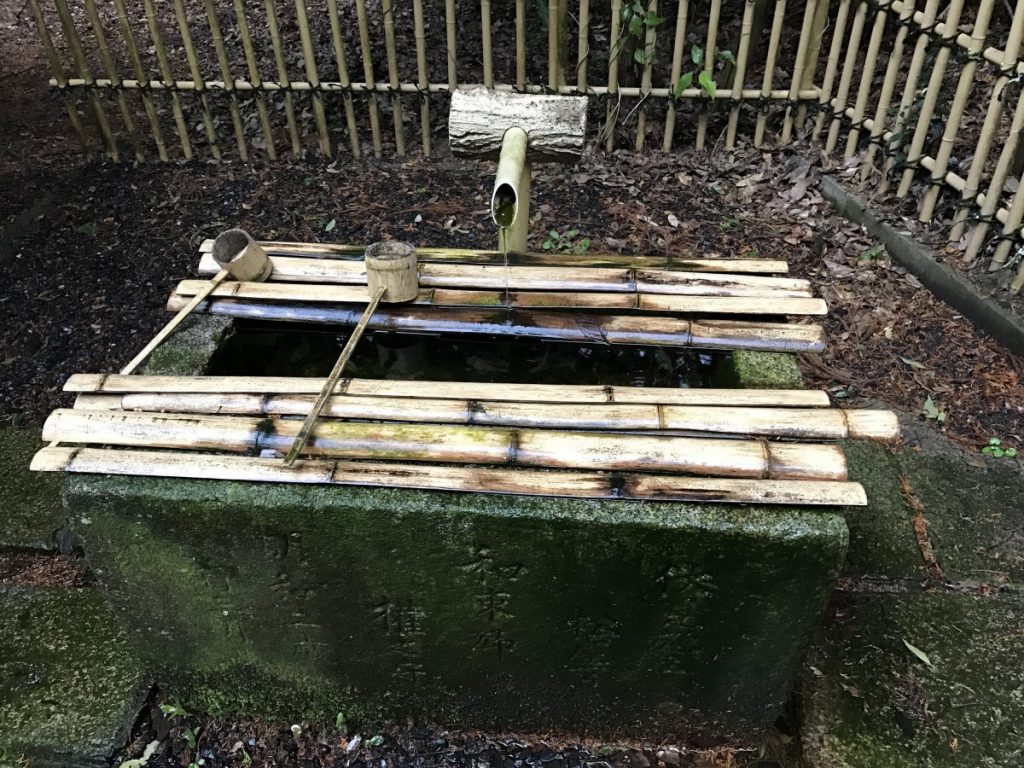
Next, there is usually a basin where you can ritually rinse your hands and mouth, to purify yourself before praying.
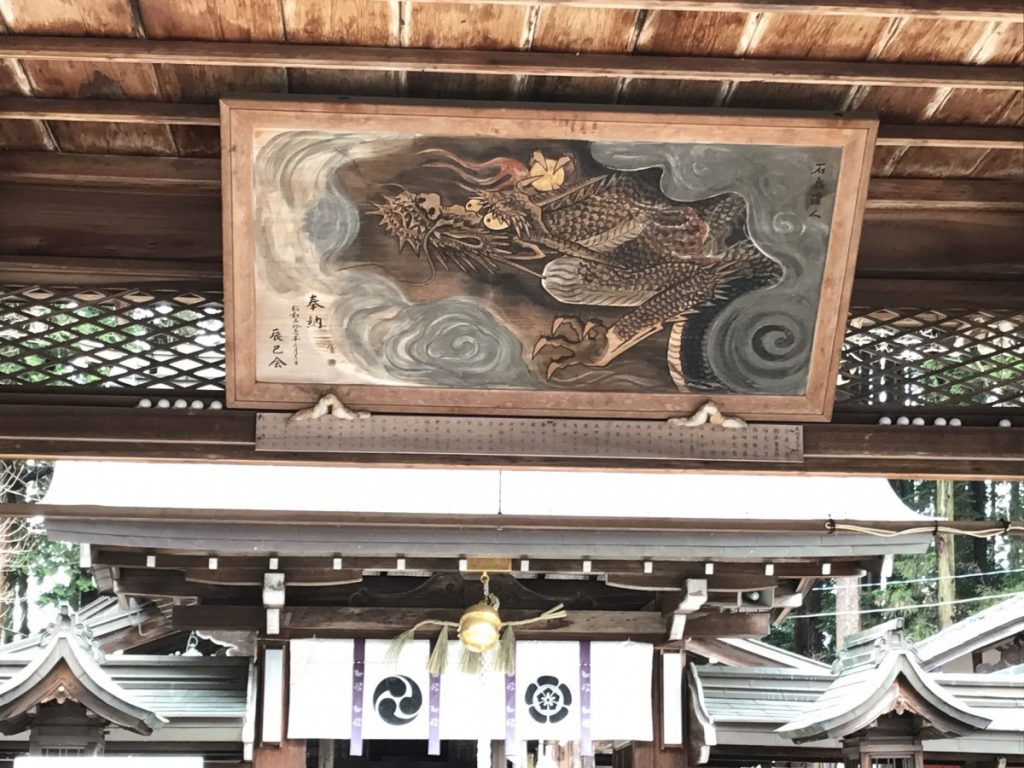
Dragon painting in a shrine in Shigaraki, Kyoto
Wazuka also has an ancient cedar tree, which has been a local guardian since for at least 800 years. The small shrines in front of the tree belong to Susanoo, the god of storms and the sea, and his wife Kushinadahime, who he saved from the eight-headed serpent Orochi.

Yasaka shrine, with Susanoo and the ancient cedar. Us interns went with a staff member, to learn about local landmarks.
It’s very rare for a cedar like this to grow so far south in Japan. Apparently this cedar has been struck by lightning countless times, and the old lady who lives across the street from it says that it protects the locals from storms. Maybe this explains the connection with Susanoo.
My favorite shrine in Wazuka is hidden in a quiet neighborhood. I was out on a run one morning, and while chatting with an elderly lady, she told me she walks up to the shrine every morning for exercise, and she recommended I go see. So, with a bit of exploration, I found a path behind a small Buddhist temple.

Graves on the hillside. You can see how much I’d climbed already.
Along the path’s many steep switchbacks were graves, some old and worn, some new and sleek. The little clusters seemed to be by family, based on the names. The morning air was quiet except for birdcalls, and the atmosphere felt very solemn. After a while, the path became more steep, and the graves disappeared.

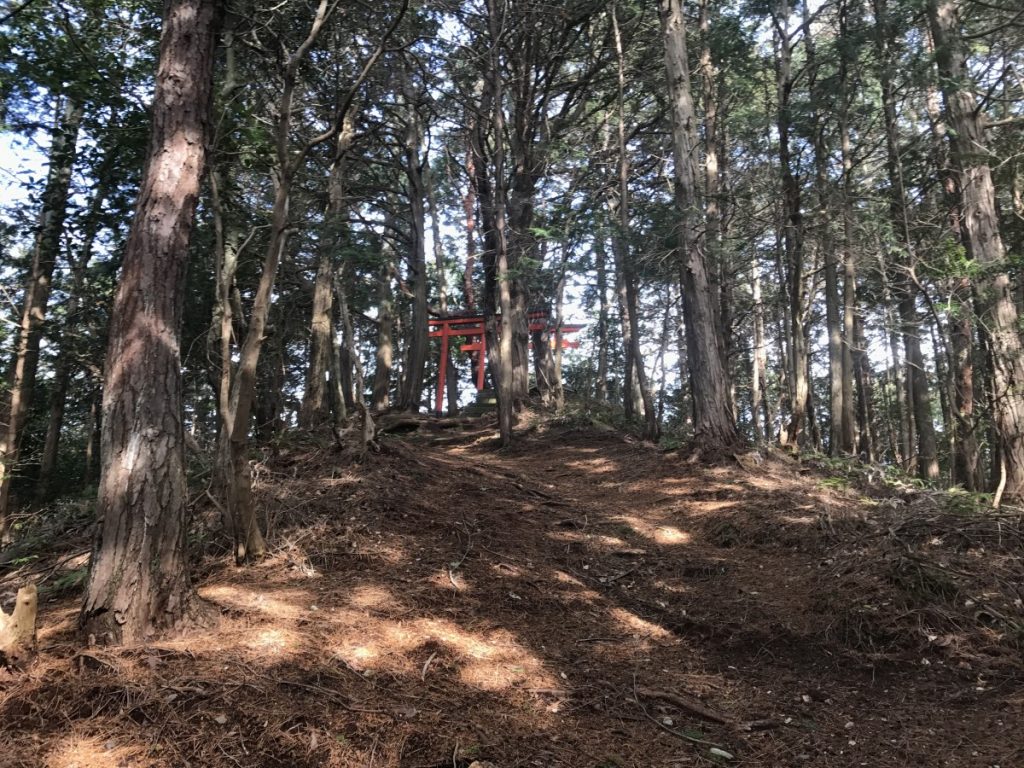
Eventually red torii gates came into view. At the very top of the hill, I found the shrine. With the help of my phone dictionary, I determined that the shrine belongs to Inari, an agricultural deity associated with rice, sake, and tea. With the tea fields fanned out around the back of the small peak, it seemed fitting. Inari is associated with white foxes, which act as messengers, and I spied a small pair of ceramic foxes in the shrine.

It’s one of my favorite places, and I’ve been back several times. That’s all for today, see you in the next post!
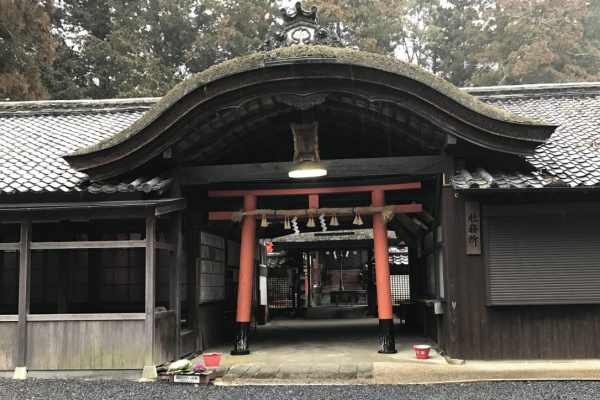

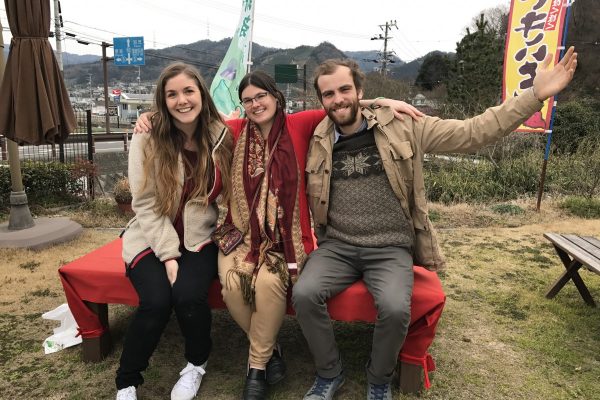
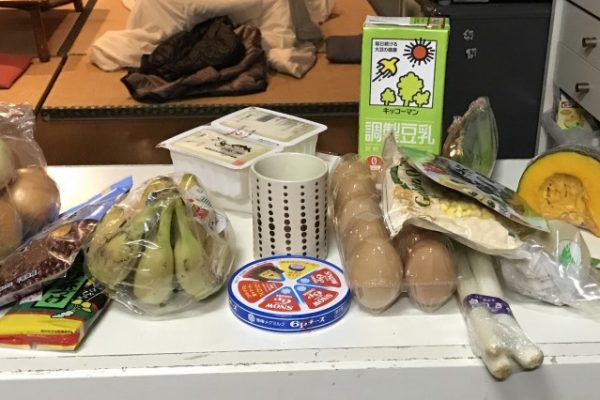
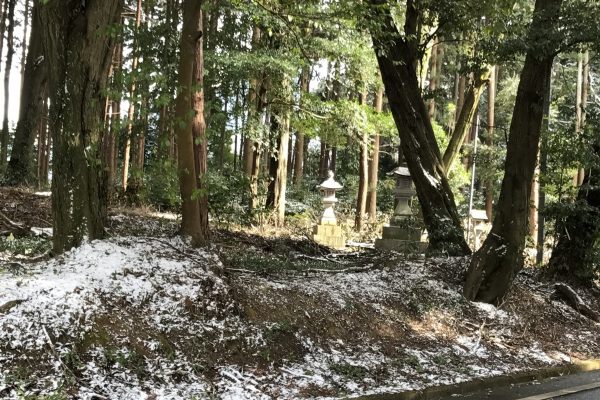
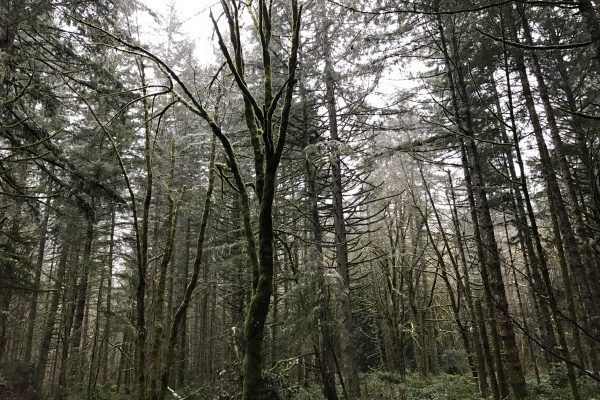
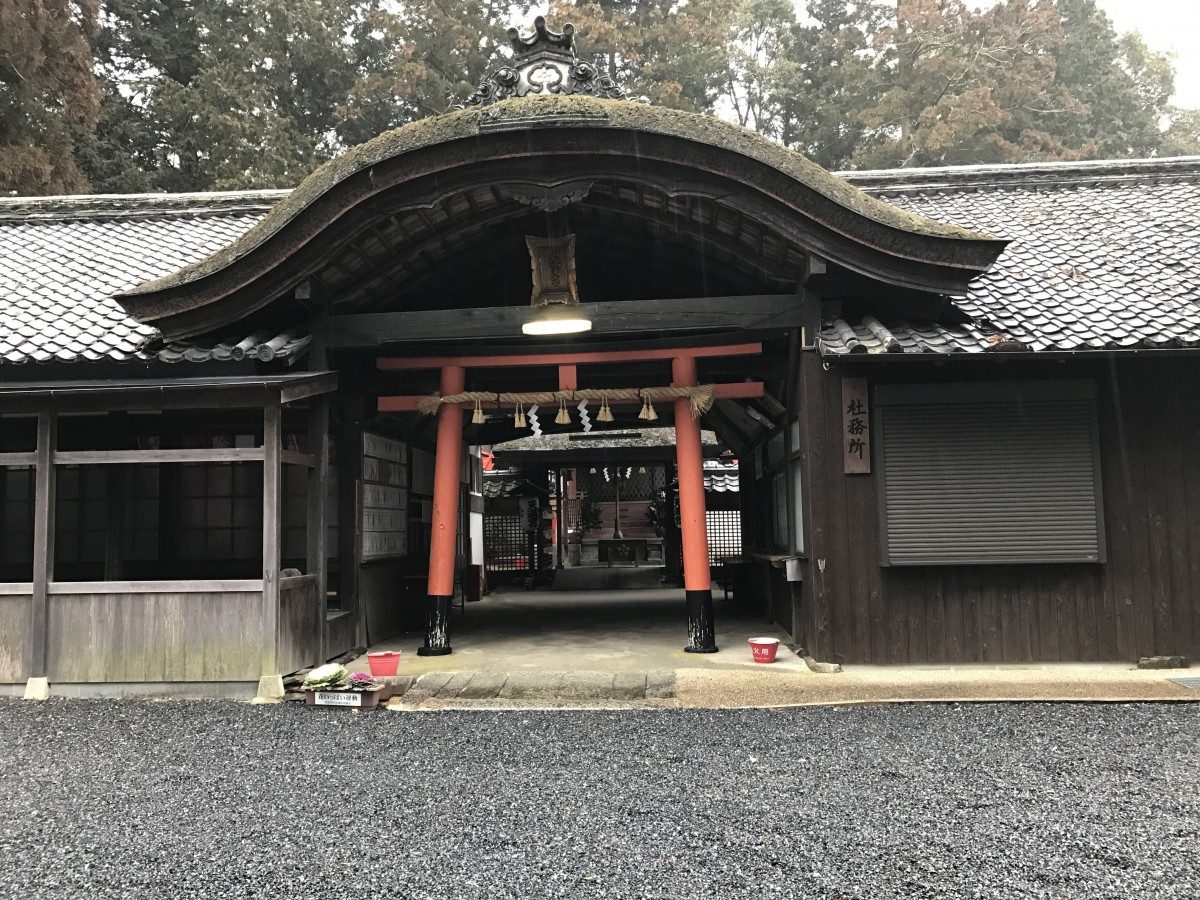

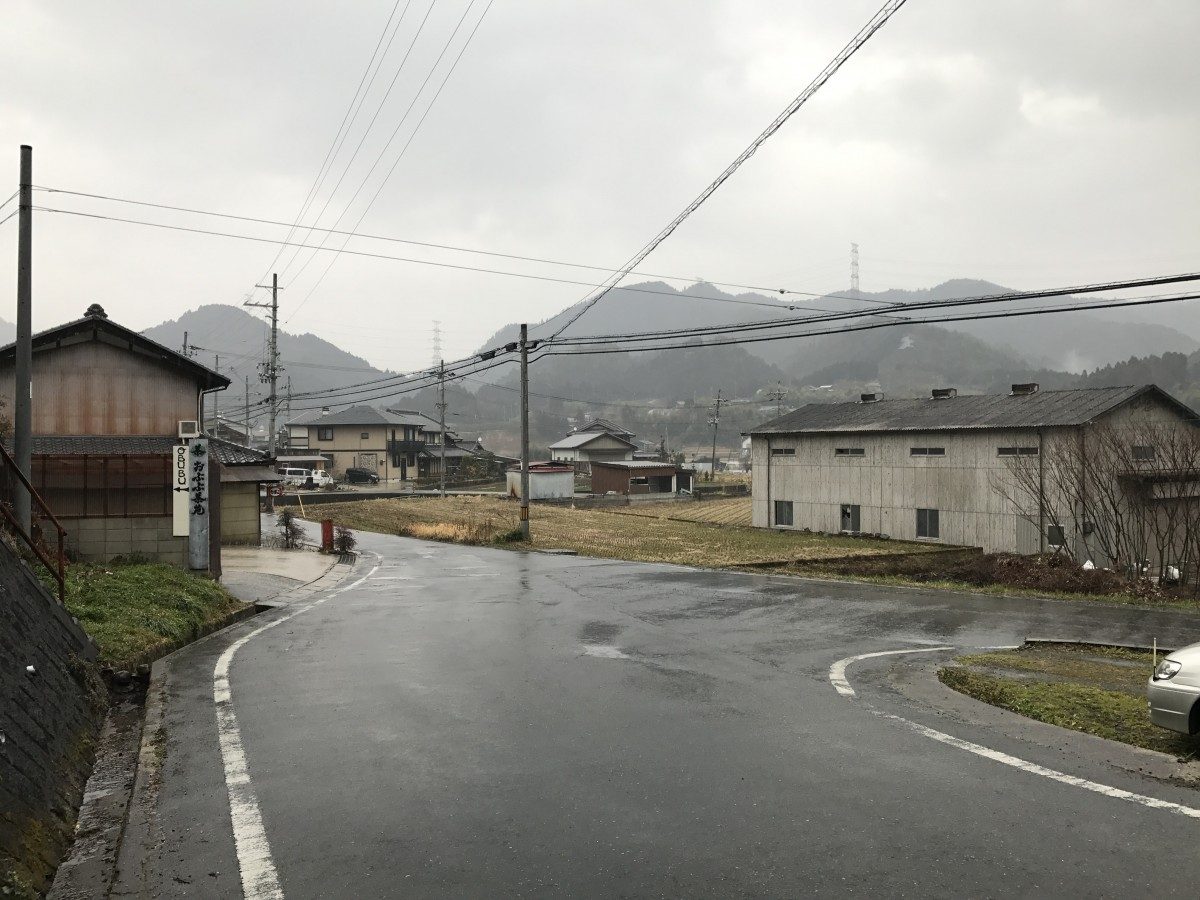
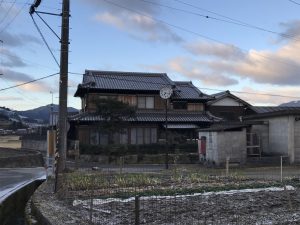
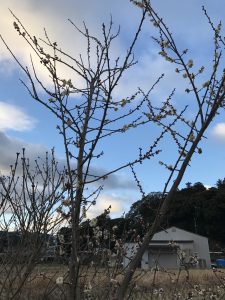


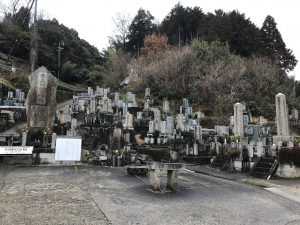
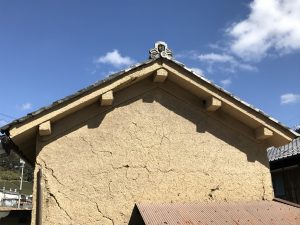

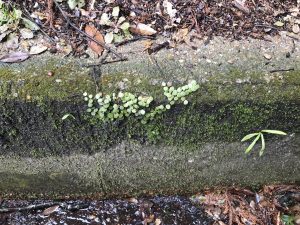
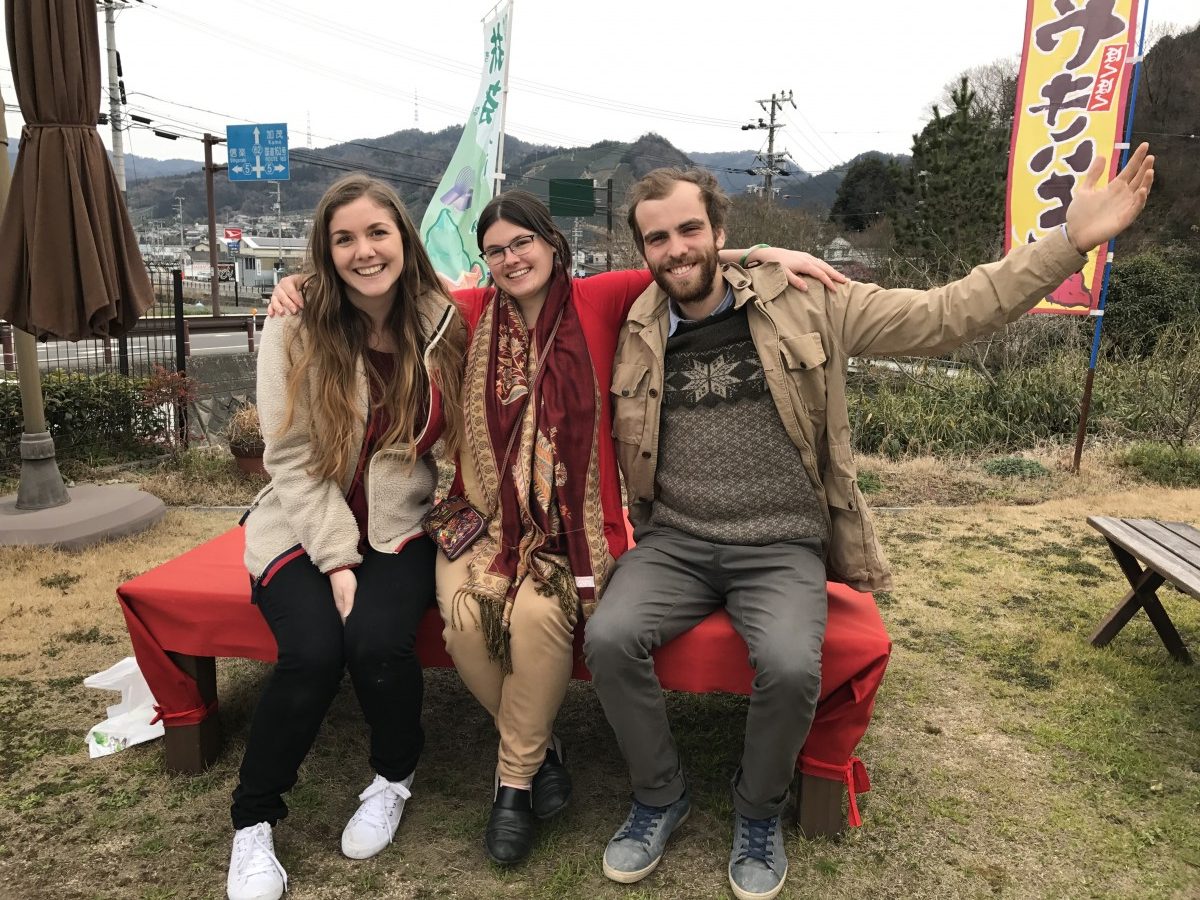

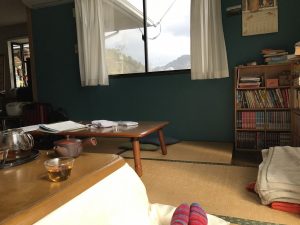
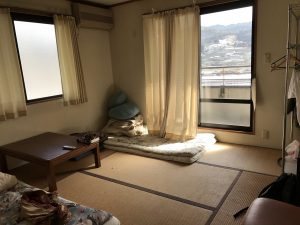


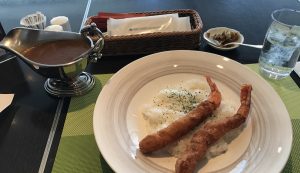
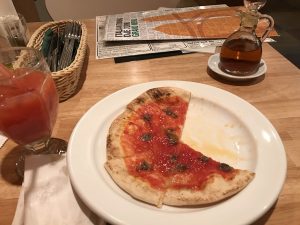 For my second meal, I sought out a less expensive option, in a little Italian cafe nearby. I ordered an anchovy pizza and some blood orange juice, one of the more frugal options, and when it arrived I had another surprise; there was no cheese!
For my second meal, I sought out a less expensive option, in a little Italian cafe nearby. I ordered an anchovy pizza and some blood orange juice, one of the more frugal options, and when it arrived I had another surprise; there was no cheese!  In the morning, before taking the train into Kyoto prefecture, I had breakfast at a fast-food place. For about $3, I got tea, water, fish, rice, miso, porridge, nori, and veggies in a vinegar dressing. Perfect for making little sushi bites. That’s my kind of fast food!
In the morning, before taking the train into Kyoto prefecture, I had breakfast at a fast-food place. For about $3, I got tea, water, fish, rice, miso, porridge, nori, and veggies in a vinegar dressing. Perfect for making little sushi bites. That’s my kind of fast food! My first full day in Wazuka, I helped out at a booth at the local farmer’s market. We served matcha crepes and matcha lattes – I didn’t get a picture of our neatly made crepes, just one of the practice ones, but trust me that it tasted just as good.
My first full day in Wazuka, I helped out at a booth at the local farmer’s market. We served matcha crepes and matcha lattes – I didn’t get a picture of our neatly made crepes, just one of the practice ones, but trust me that it tasted just as good. The lady selling daikon and pickles across the way was pretty amused. Later on, I picked up a container of pickles from her to take home… daikon in some sort of soy sauce base, I believe. Delicious! I’ve been eating them on everything, but they’re especially tasty on a block of cold silken tofu, with a drizzle of teriyaki sauce (which was also from the market, and made locally).
The lady selling daikon and pickles across the way was pretty amused. Later on, I picked up a container of pickles from her to take home… daikon in some sort of soy sauce base, I believe. Delicious! I’ve been eating them on everything, but they’re especially tasty on a block of cold silken tofu, with a drizzle of teriyaki sauce (which was also from the market, and made locally).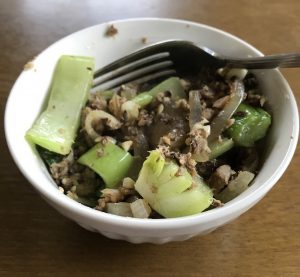 In Wazuka I’ve mostly been cooking at home, experimenting with the ingredients available. This bok choy dish with anchovies, onion, and garlic was delicious – not everything’s turned out so well!
In Wazuka I’ve mostly been cooking at home, experimenting with the ingredients available. This bok choy dish with anchovies, onion, and garlic was delicious – not everything’s turned out so well!